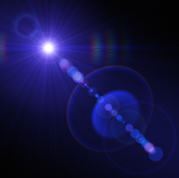April 2020
Spotlight Summary by David Paganin
Optical Eratosthenes’ sieve for large prime numbers
Diffraction patterns can encode prime numbers in their zeros. In a 2019 theory-and-simulations paper by T.C. Petersen et al., a means to achieve this was developed. Far-field diffraction patterns, obtained by illuminating suitable masks with coherent light, determine which integers are prime. Free-space diffraction thereby gives a form of optical computer that encodes, within wavefront zeros associated with total destructive interference, one of the oldest known forms of testing integers for primality: the "Sieve of Eratosthenes." In the present 2020 paper by Bohan Li et al., the work of Petersen et al. has been extended, and the resulting scheme experimentally implemented. Li et al.'s experiment reflects monochromatic laser light from a set of patterns encoded using a phase-only spatial light modulator, with the resulting diffraction-pattern zeros indicating all prime numbers below 22,201. This is an exciting development since, in the words of Li et al., "it demonstrates the potential of free-space linear optics in tasks that transcend imaging or communication, such as computation and solving mathematical problems." I warmly recommend this paper to your attention.
You must log in to add comments.
Add Comment
You must log in to add comments.


Article Information
Optical Eratosthenes’ sieve for large prime numbers
Bohan Li, Giorgio Maltese, J. I. Costa-Filho, A. A. Pushkina, and A. I. Lvovsky
Opt. Express 28(8) 11965-11973 (2020) View: HTML | PDF